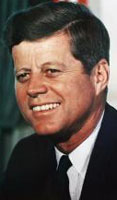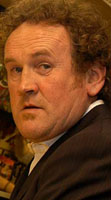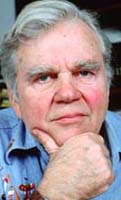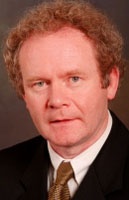   
Etymology:
[-]
Mostly unreduced, typically dolicho- or mesocephalic and mostly depigmented Upper Palaeolithic survivor of Cro-Magnid provenience, closely related to the Dalo-Falid type; the two are distinguished by minor specializations only. The distinctive "Irish" features which characterize the Brünn are to some extent recalled in the Scandinavian Cro-Magnid stock. This is just as likely a result of convergence as of synapomorphy.
Like the Dalo-Falid type, Brünns are typically tall, broad-shouldered, and large-headed, with big bones and heavy musculature. In its unmixed form the type is usually quite easily distinguished from other local varieties, such as the shorter-statured, more gracile and more leptomorphic Keltic Nordid, with which it is cohabitant. The modern Brünn inhabitants of western Ireland are mesocephalic to sub-brachycephalic, whereas their more easterly Cro-Magnid counterparts are typically long-headed. This is possibly due to the presence of a shorter-headed strain (such as Borreby) in the former, or to a local process of brachycephalization. The ancestral Cro-Magnid skull form was clearly dolichocranial. The Brünn forehead is high and broad, and the face broad and mostly orthognathous. The malars are wide, the lower jaw deep and broad (yet usually not as broad as in the Dalo-Falid type), and the chin is prominent and typically clefted (the latter is foremost a male trait). As with the other Cro-Magnid types, male Brünn facial features can be very ruggedly masculine, often with exaggeratedly pronounced browridges and deep jaws; the degree of sexual dimorphism is high, and a corresponding ruggedness is not usually observed among the females. As with Borreby women, these are typically rounder-featured and larger-breasted than the European mean.


 Martin McGuinness John F. Kennedy Colm Meaney Andy Rooney (Ireland) (USA) (Ireland) (USA)
Western Ireland - Cork and Kerry in particular - houses the only living Brünn population in the world today, and this element accounts for nearly half of the Irish racial composition on the whole. The Irish Brünn type has added an important increment to the Icelandic population, which already contains a predominant Cro-Magnid strain through the presence of the western Norwegian Trřnder type of Viking descent. An aboriginal Brünn-like population has also merged with the Germanic settlement in the Frisian and northwestern German country, where its descendants take the form of an altered Hallstatt Nordid, a type referred to as Anglo-Saxon. This mixed strain has played an important role in determining England's present racial situation.
- Dalo-Falid- Trřnder - Anglo-Saxon |








